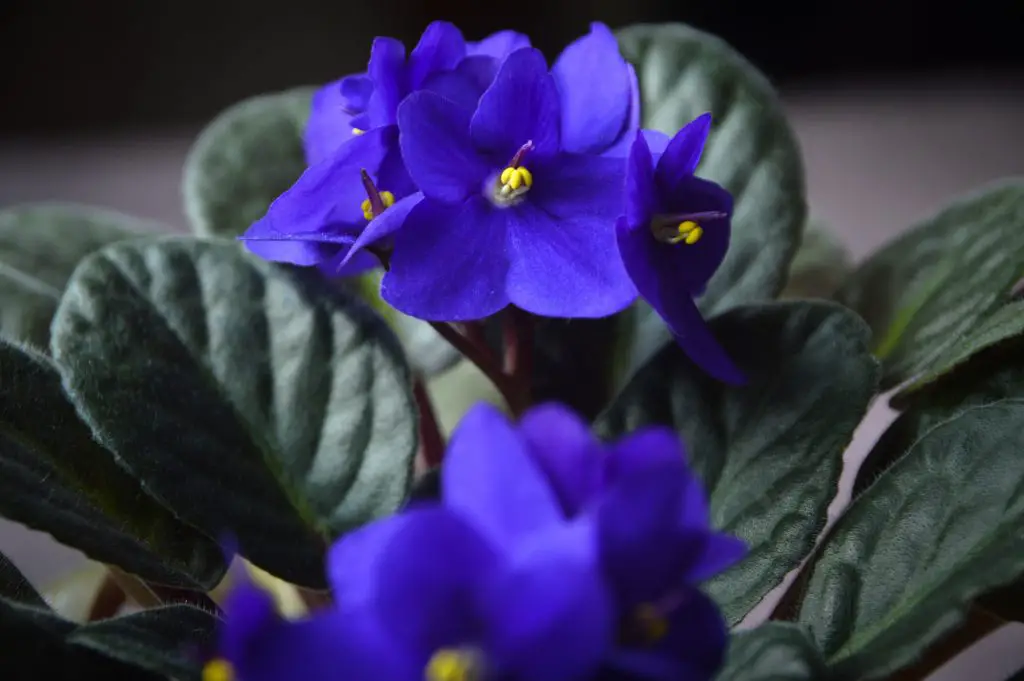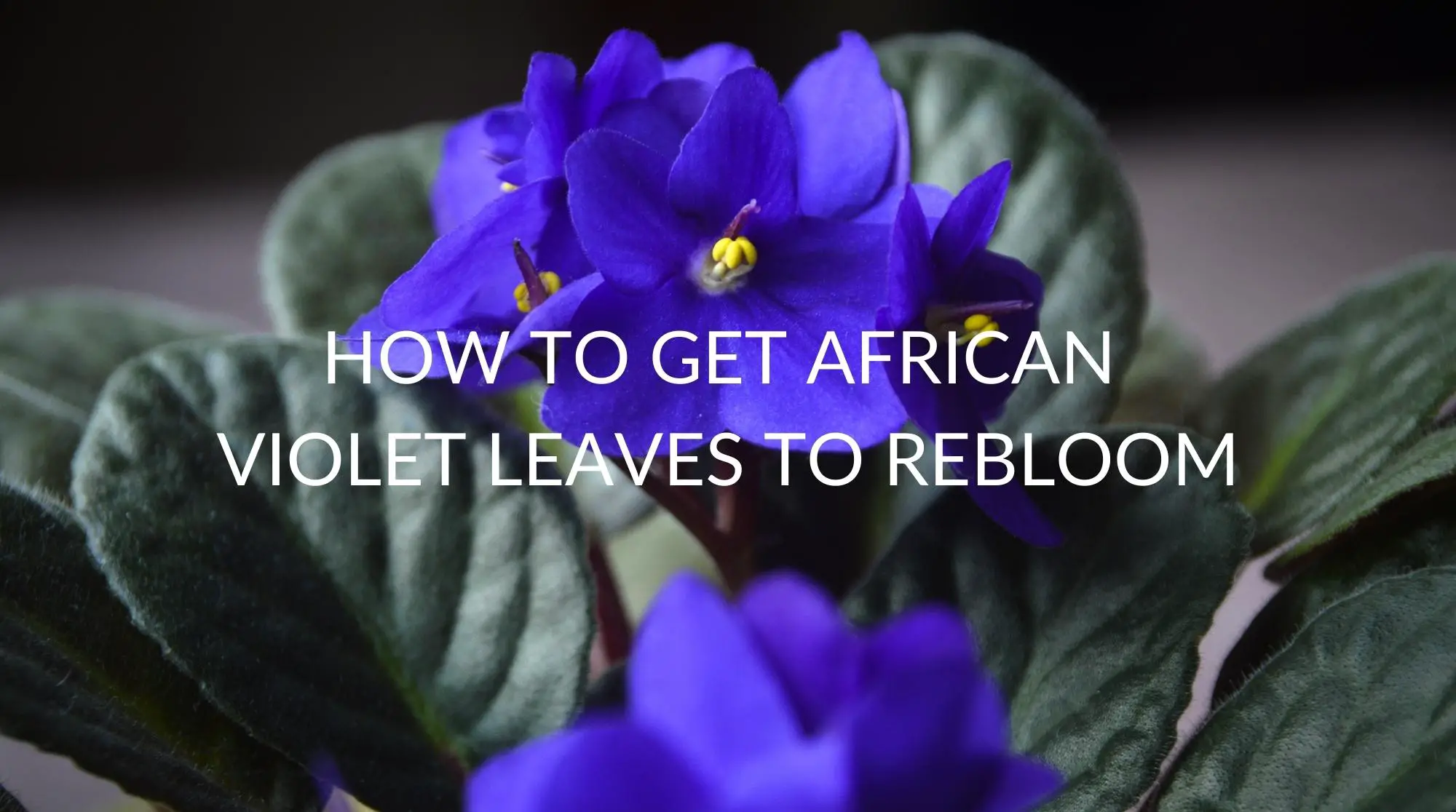There are many tactics to influence your African Violets in blooming properly. One of the most important factors in getting African Violets to bloom is the amount of sunlight. Giving your African Violets at least four hours of sunlight in the morning and four hours at night is critical.
Continue reading the remainder of this article to learn more about how to get African Violets to rebloom.
Why Has My African Violet Stopped Blooming?
The most common reason that an African Violet stops blooming is that it is not receiving enough sunlight. A lack of sunlight prevents the flower from receiving the necessary nutrients it needs to bloom fully.
In addition to lacking sunlight, there are several other reasons why African Violets stop blooming. Luckily, you can fix most of these with simple solutions!
Inadequate Sunlight
Sunlight has a major influence in getting African Violets to bloom. Suffering from a lack of sunlight can cause your African Violets to bloom improperly.
Ideally, gardeners will display this beautiful flower in direct sunlight for two to four hours each day.
Top-Down Watering
The way you water your African Violets influences whether they will bloom properly. If your African Violets stop blooming, it might be top-down watering techniques, which deprive the roots of water.
Overwatering
African Violets require ample drainage, so they grow properly. An African Violet with poor drainage is overwatered. They will stop blooming. Overwatering can lead to root rot, where the roots are oversaturated in water and then rotted.
Root Rot
Root rot is the result of oversaturating your African Violet’s roots. Rotting roots often occur because of poor watering techniques or a lack of drainage. At first, it will stop your African Violets from blooming as the roots decay until finally killing the flower.
Incompatible Temperatures or Environments
African Violets require a sunny, warm environment to bloom properly. Attempting to grow an African Violet somewhere warmer or colder than 70-80°F during the daytime can be detrimental to your blooming.
Pot Size
The African Violet appears large, but it does not require excessive space. Repotting the African Violet in a planter or pot that is too large prevents it from firmly establishing its roots. If the African Violet cannot establish its roots, it will not bloom.
Out of Season
The African Violet has a blooming season that lasts nine months. During three months out of the year, the African Violet goes out of season. Technically, they are not out of season, but during three months out of the year (wintertime), the African Violet does not receive the necessary sunlight it needs to thrive.

How To Get African Violets To Rebloom
Many techniques can help gardeners rebloom their African Violets, such as bottom-up watering, using ultraviolet lights, and much more. Techniques vary based on the issue you are having with your African Violets.
It is important before anything else to determine the issue you are having with your plant and understand why your plants are struggling to bloom. From there, you can begin to address the problem and regrowth. Depending on the condition of your plant and the reason for the regrowth, you will use different tactics.
The time it takes to rebloom your African Violets may also vary. For instance, you will need to replant an African Violet that has suffered from root rot. On the other hand, an African Violet with sunlight issues may take only a few days to rebloom. Stay patient and use these tips to find the best solution to your problem.
Increase Sunlight
The main reason people have issues with African Violet’s blooming is a lack of sunlight. By increasing the amount of sunlight that their plants receive, gardeners can help their flowers rebloom. Increasing sunlight can come from repositioning the plant or using ultraviolet light to simulate sunlight.
Use Ultraviolet Lights
If you do not have much natural lighting to place your African Violet, consider purchasing ultraviolet light. Use ultraviolet light to simulate the sunlight that your plant desperately needs.
Better Environment
Create a hospitable environment for your African Violets by bringing the temperature of their environment to a temperature between 70-80°F. A stable, warm environment will help your African Violets prosper.
Water Your African Violet Evenly
Uneven watering is a major reason why African Violets struggle to bloom. Dip the bottom of the flower pot in water to let the roots of your African Violet soak the water evenly. Dipping or soak watering is a more effective and even way of watering your African Violet than top-down watering.
Wondering whether your African Violets like to be misted? Click here!
Snip Dead Blooms
If there are dead blooms on the ends of your African Violets, snip them away with a pair of scissors. Any blooms that remain on your plant are stealing your plant’s vital nutrients and water. Cut these away underneath the decaying part of the leaf.
Use African Violet Fertilizer
Penn State recommends using fertilizers specially designed for African Violet. An African Violet fertilizer should contain nitrogen, phosphorus, and potassium. These powerful components help the African Violent develop healthy stems, roots, and bountiful leaves.
Increase Your Drainage
If your pot does not have good drainage, it can lead to root rot. Invest in a pot that provides some solid drainage to avoid oversaturation. Since African Violets prefer bottom-up watering, you should purchase a pot with multiple holes on the bottom.
Smaller Planters
Often, people purchase planting pots that are the wrong size for their African Violet. If the pot you have repotted your African Violet in is too large, you must purchase a smaller planter. You should purchase a planter for your African Violet that is no bigger than one-third the diameter of the African Violet.
FAQ
Should You Cut Dead Blooms Off African Violets?
Cut the dead blooms from African Violets to promote new growth
If you’re curious whether African Violets like Coffee grounds, click here! . Pruning these dead flowers can be done the same way as any other flower. Use scissors and cut them at the base of the wilting petal behind the dead tissue.
What Is The Best Temperature for An African Violet?
The ideal temperature for the African Violet is between 70-80°F. The coldest temperature that the African Violet can withstand is 65–70°F. If your beautiful pink flowers are grown anywhere outside of their ideal warm environment, they will not bloom.
Recap
The magenta petals of the African Violets are bright and beautiful, but they can have trouble blooming when they do not receive enough sunlight or water. Evenly watering your plants and giving them a consistent amount of sunlight can fix these problems. With at least eight hours of sunlight each day, you guarantee that your flowers will bloom beautifully.
African Violets are very particular about the conditions you keep them in. They require specific weather conditions, temperatures, and without these conditions met, more problems can arise. Luckily, consistent watering and sunlight can prevent additional problems like root rot or the need to invest in ultraviolet lights.
Blooming and reblooming are bound to occur with any African Violet plants. When your blooms die, cut them off to prevent necessary nutrients from spreading to other parts of your plant. The African Violet requires substantial moisture, equally distributed among the plant. Among many other problems, unequal water distribution can prevent the African Violet from blooming.








